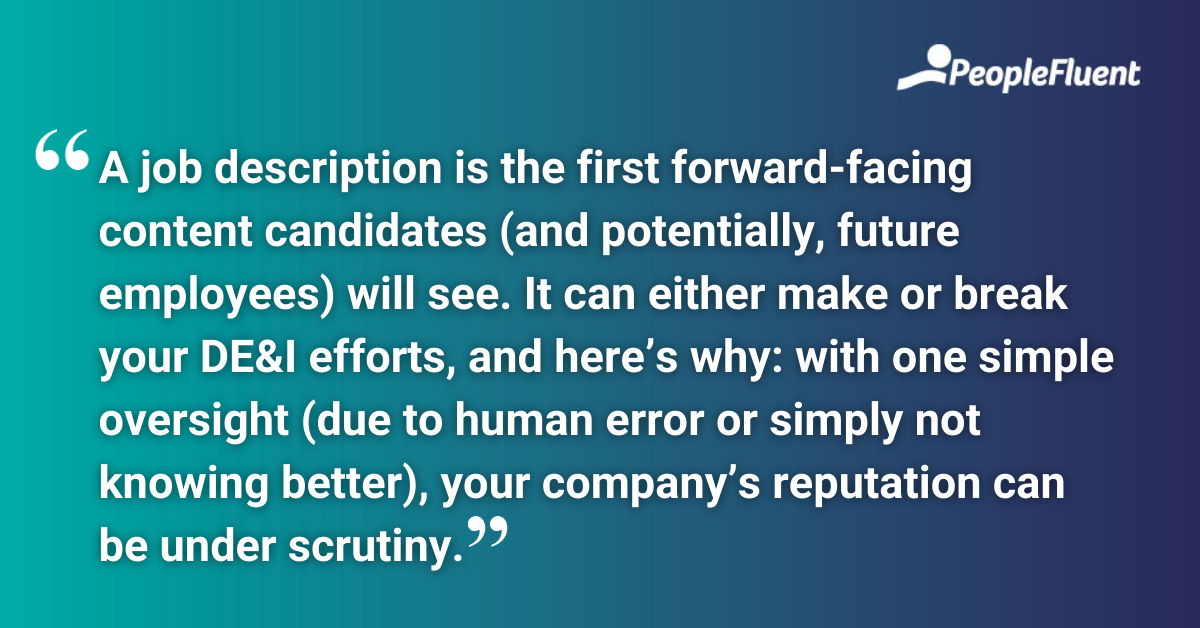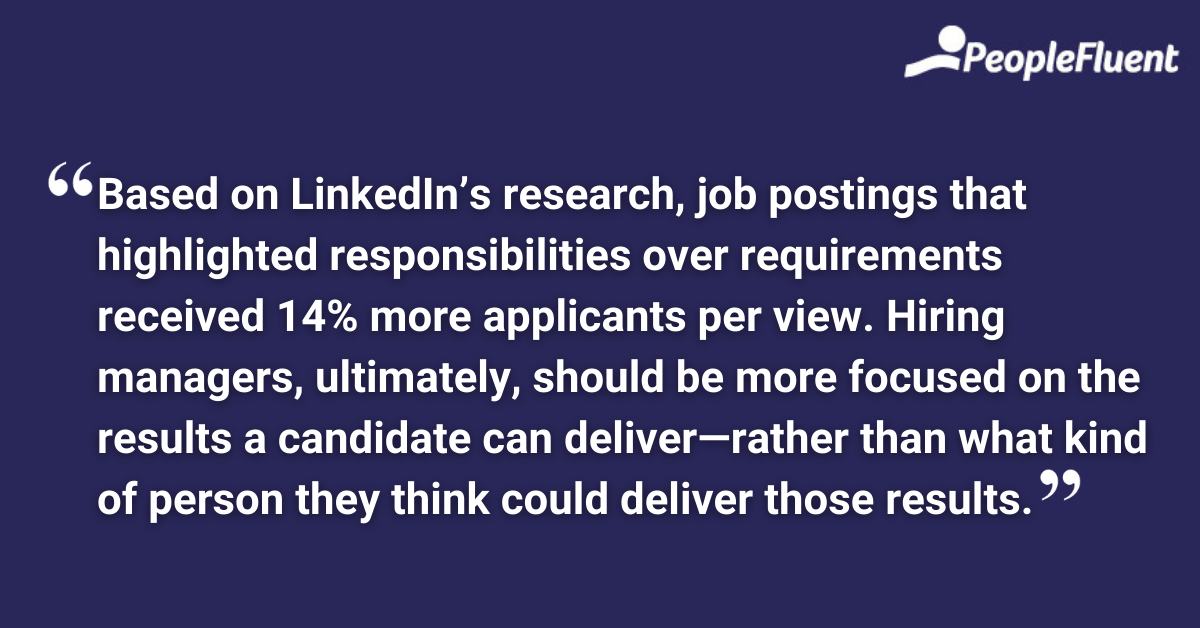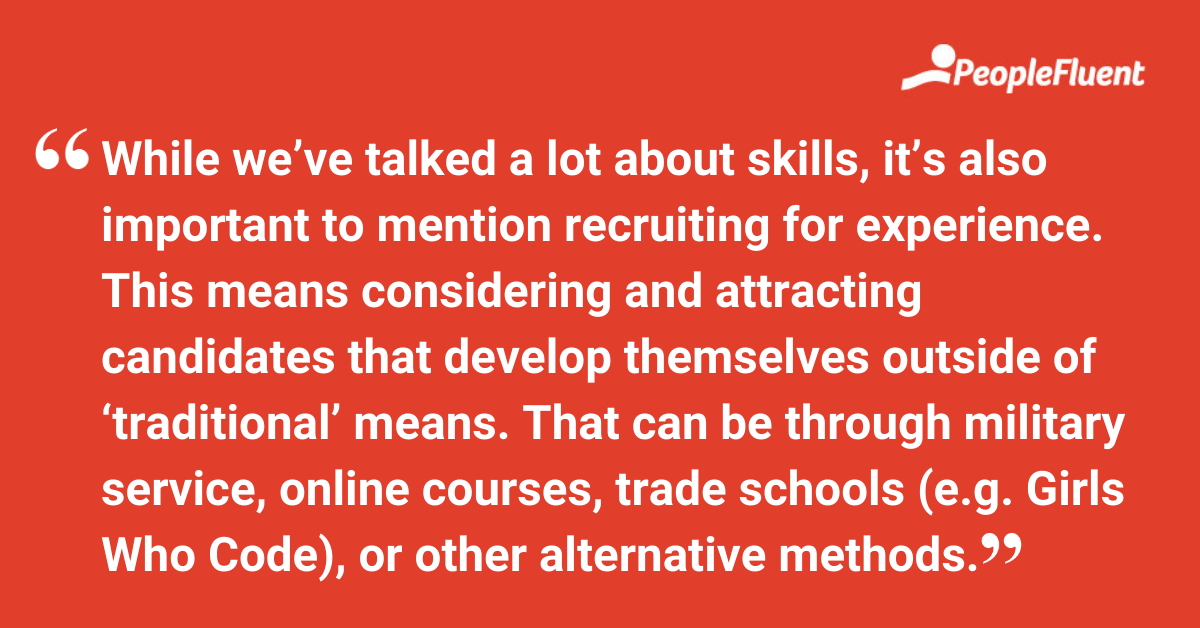Published: Oct 19, 2021Time to read: 4mins Category: Insights
How a Skills-Based Approach to Hiring Improves DE&I and Employee Experience
A skills-based approach to hiring has the potential to greatly impact your diversity, equity, and inclusion efforts, sidestepping old structures and getting you access to a more diverse pool of candidates. Explore the possibilities with us in this article.
Evaluating candidates (both internal or external) by skillsets rather than college degrees or work history will help create a new kind of balance in your workforce. It will also help companies gain visibility of where the top talent exists within the business. Plus, it can even help to counteract decreased retention rates considering employees without a four-year degree tend to stay with companies 34% longer than those with degrees.
If your hiring managers are having trouble finding qualified candidates for hard-to-fill roles, it’s time to focus on your approach to recruitment. Focusing on DE&I, let’s look at a couple of reasons you might not be attracting diverse talent, and how a skills-based approach could help you out.

MORE ON THIS TOPIC | ‘4 Practical Ways to Recruit Diverse Talent’
Have You Actually Read Your Job Descriptions?
Companies that want to start recruiting and hiring for skills need to pay extra attention to this point. Your job descriptions effectively act as an invitation for anyone interested in your company. A job description is the first forward-facing content candidates (and potentially, future employees) will see. It can either make or break your DE&I efforts, and here’s why: with one simple oversight (due to human error or simply not knowing better), your company’s reputation can be under scrutiny.
To make sure you’re putting your best foot forward and remaining inclusive, focus on these things when creating job descriptions:
- Relax or remove job requirements. Instead, opt for a well-crafted explanation of the role and its responsibilities.
- Be candidate-centric. This requires managers to understand what they want from a new team member, the manager’s vision for his or her team overall, and how the candidate’s skillset will add to that. Be sure to include both hard and soft skills.
- Focus on performance. There’s nothing wrong with setting expectations. In fact, it’s critical for attracting the right people. Just make sure to keep it focused on the day-to-day performance you expect and what skills you want a candidate to have.

Based on LinkedIn’s research, job postings that highlighted responsibilities over requirements received 14% more applicants per view. Hiring managers, ultimately, should be more focused on the results a candidate can deliver—rather than what kind of person they think could deliver those results.
DOES VIDEO HAVE A PLACE IN YOUR PROCESS? | ‘3 Tips for Using Video Interviewing Tools’
Are You Recruiting for Experience?
While we’ve talked a lot about skills, it’s also important to mention recruiting for experience. This means considering and attracting candidates that develop themselves outside of ‘traditional’ means. That can be through military service, online courses, trade schools (e.g. Girls Who Code), or other alternative methods.
Given the skills pivot—due to high unemployment rates and workers reskilling themselves to secure employment—candidates may already have the experience you’re looking for. Additionally, the internet has given us a way of accessing vast channels of informal and non-traditional learning. While it may be difficult to verify that a candidate has these skills, it doesn’t hurt to start thinking about ways to do so.
On the flip side, younger college graduates in your candidate pool may have little to no experience at all. This means strong candidates with experience may be passed over for the recent graduates, simply because the latter meets one requirement on your job description. With the growing concerns about student loan debt, younger generations may not be enticed to go the college route in coming years. While this is just speculation, for now, it’s important to remember when developing your future workforce.

ALSO ON THE BLOG | ‘5 Lessons ‘The Office’ Can Teach Us About What NOT to Do in Recruitment’
Further Nuggets of Skills-Based Hiring Wisdom Await...
You’ve just read an extract from our ebook, ‘Don’t Reinvent the Wheel, Shift It! How a Skills-Based Workforce Improves Recruitment, DE&I, and Innovation’. Download your copy today to dig into how skills-based recruiting is helping organizations widen candidate pools, narrow skills gaps, and build fairer, more open environments.